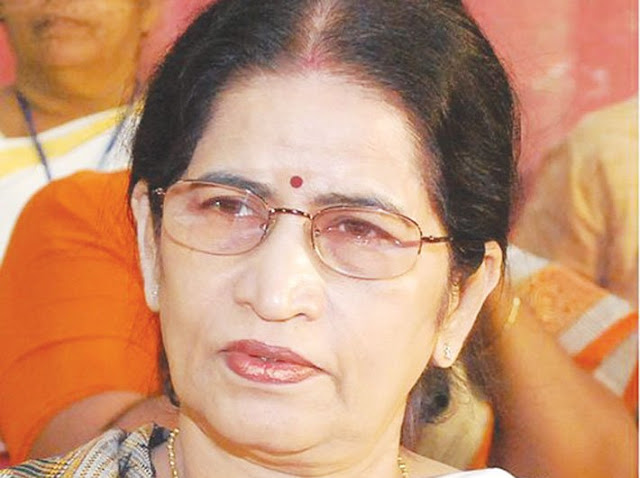Ishaan Khatter Biography in Odia : Ishaan Khattar was born on 1 November 1995 in Mumbai to actor Rajesh Khattar and actress Neelima Azeem. Being born into an actor's family, he also developed an interest in acting. He completed his schooling at Billabong High International School, Mumbai. He later joined RIMS International School and Junior College, Mumbai to pursue his graduation. His parents divorced in 2001, and he has been living with his mother since then. Related Content Neeraj Chopra Biography in Odia Odia Nitibani Gangadhar Meher Biography Ishaan Khatter is a handsome boy of about 5'10" feet height. Like his brother, he is a fitness freak and maintains a fit body. Their chest is about 40 inches, and their teeth are 13 inches. Ishaan Khattar also likes to stick to his fashion and wears festive clothes. Ishaan Khattar Family, Girlfriend and Wife Ishaan Khattar was born on 1 November 1995 in Mumbai. His parents Rajesh Khattar and Neelima Azeem are both actors. Shahid...
An academician and writer, Dr Pratibha Ray is an eminent fiction writer of contemporary India. She was born on January 21, 1943, at Alabol, a remote village in the Balikuda area of Cuttack district in Odisha.
From her childhood she was fascinated towards writings. Her father Parshuram Das gave up a lucrative job in the Tata Iron and Steel Company and joined as the first Head Master of Balikuda High School to educate the people to help them realise the significance of freedom struggle.
Her mother Manorama Devi was a housewife and at the same time was associated with social service. Pratibha had her schooling in Balikuda High school. Her father wanted her to be a doctor and a poetess like Utkal Bharati Poetess Dr Kuntala Kumari Sabat but Pratibha wanted to be a writer. Therefore she left her medical college soon after the admission and without the knowledge of her father started studying Botany at Ravenshaw College in Cuttack. This daring and bold step of her was a far imagination for a young girl like Pratibha.
However, these attributes of revolt, fearlessness and boldness was the impact of her Gandhian father whom she considered her role model. These qualities she inculcated from her childhood are evident in her writings now.
Pratibha married Akshaya Chandra Ray, an engineer in PWD in Odisha very young just after her graduation. She continued her writing career even after her marriage. She completed her Master’s in Education, and PhD in Educational Psychology while raising her three children. Her post-doctoral research was on ‘Tribalism and Criminology of Bondo Highlander’, one of the most primitive tribes of Odisha, India.
As an academician she did a commendable job during her research on the Boda tribes. She took the challenging task on going to the place of the primitive, wild and aggressive Bonda tribe and work with them to complete her research when no male researcher was willing to go there. This shows her fearlessness, courage, boldness and commitment towards her work.
As a writer she started writing at the age of nine. Influenced by the beauty of the nature she wrote the poem “Mother”. She is basically a fiction writer who writes novels and short stories in Odia. She has also written travelogues and essays. Her first novel “Barsa Basanta Baishakha” in 1974 was a best seller for its readability among the female readers throughout Odisha. Ray has 20 novels, 24 short stories, 10 travelogues, two poetry collections and a number of essays to her credit.
Her writings have been translated into English, other foreign languages as also a number of other Indian languages. Among the other noted contributions of Ray includes the “Ananya”, 1977, “Nishidha Prithivi”, 1978, “Parichya”, 1979, “Aparichita”, 1979, “Punyatoya”, 1979, “Meghamedura”, 1980, “Ashabari” , 1980, “Ayamarambha”, 1981, “Nilatrishna”, 1981, “Samudrara Swara”, 1982, ” Shilapadma”, 1983, “Yajnaseni”, 1984.
She has been awarded with ‘Odisha Sahitya Academi Award’ for her novel ‘Sheelapadma’ in 1985, ‘Sarala Award’ for her novel ‘Yajnaseni’ in 1990, Moortidevi Award for her Novel ‘Yajnaseni’ in 1991, ‘Sahitya Akademi Award’ for her Short-Story Collection ‘Ullaghna’ in 2000, ‘Amrita Keerti Puraskar’ in 2006, ‘Padma Shri Award’ in Literature and Education by the Government of India in 2007, and ‘Jnanpith Award’ in 2011.
She has also been honored with the title “Katha Bharati” and “Odisha Gourav” (Pride of Odisha) by prestigious literary Organisations in 2013. Best writer award by Odisha Society of America (OSA). She was also honored by Hindi Sahitya Sabha, Toronto, Canada and Odia Society, Canada. She was honoured by University of Incarnetworld, San Antonio, USA, 2006. She was awarded from Kerala and Andhra Pradesh for her creative writing.
Her novels and stories have been adopted into films and TV serials on national level. Hema Malini, the famous film star, adapted her novel “Draupadi” for stage ballet and has performed that in India and abroad. Her story “Moksh” has been made into film and won the best film award from President of India.

Comments
Post a Comment